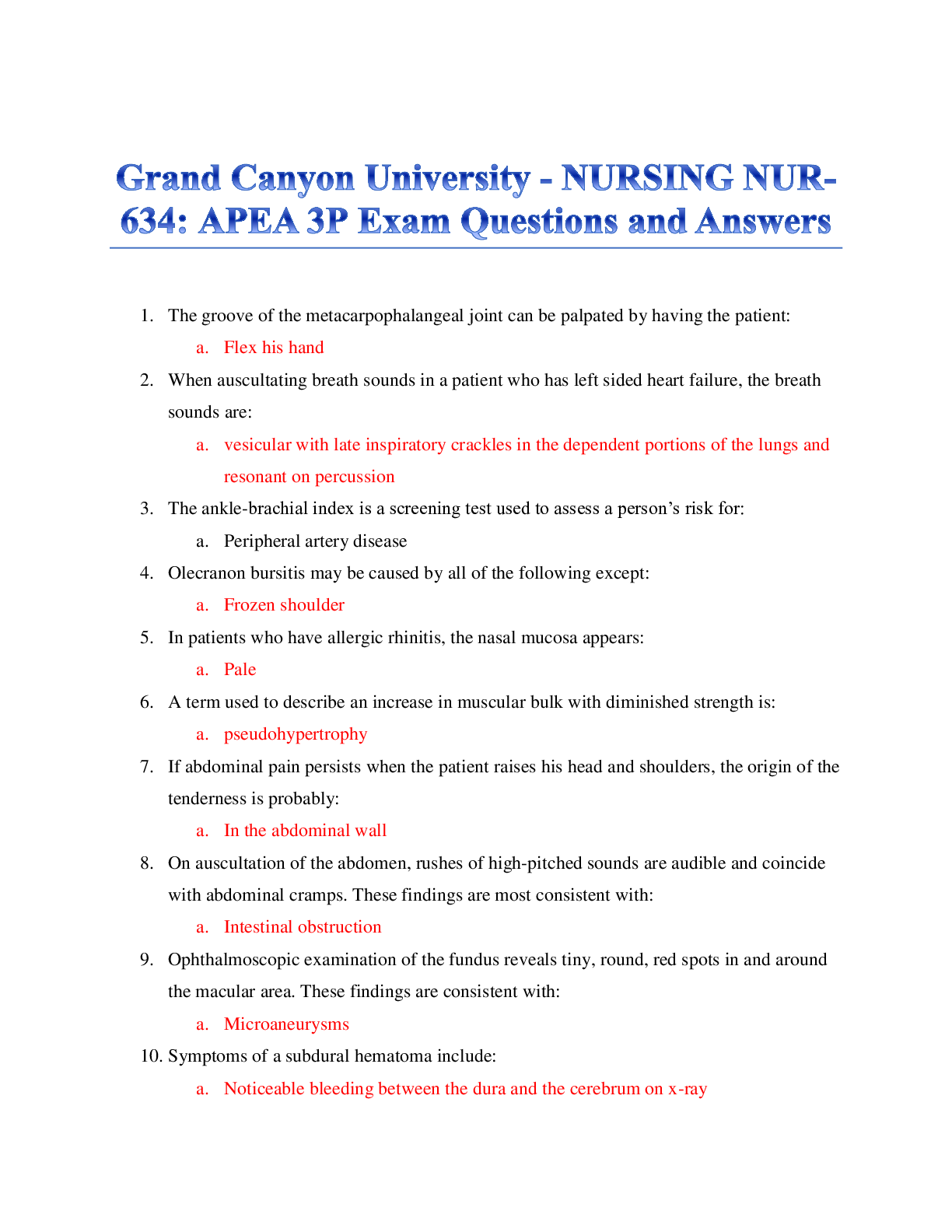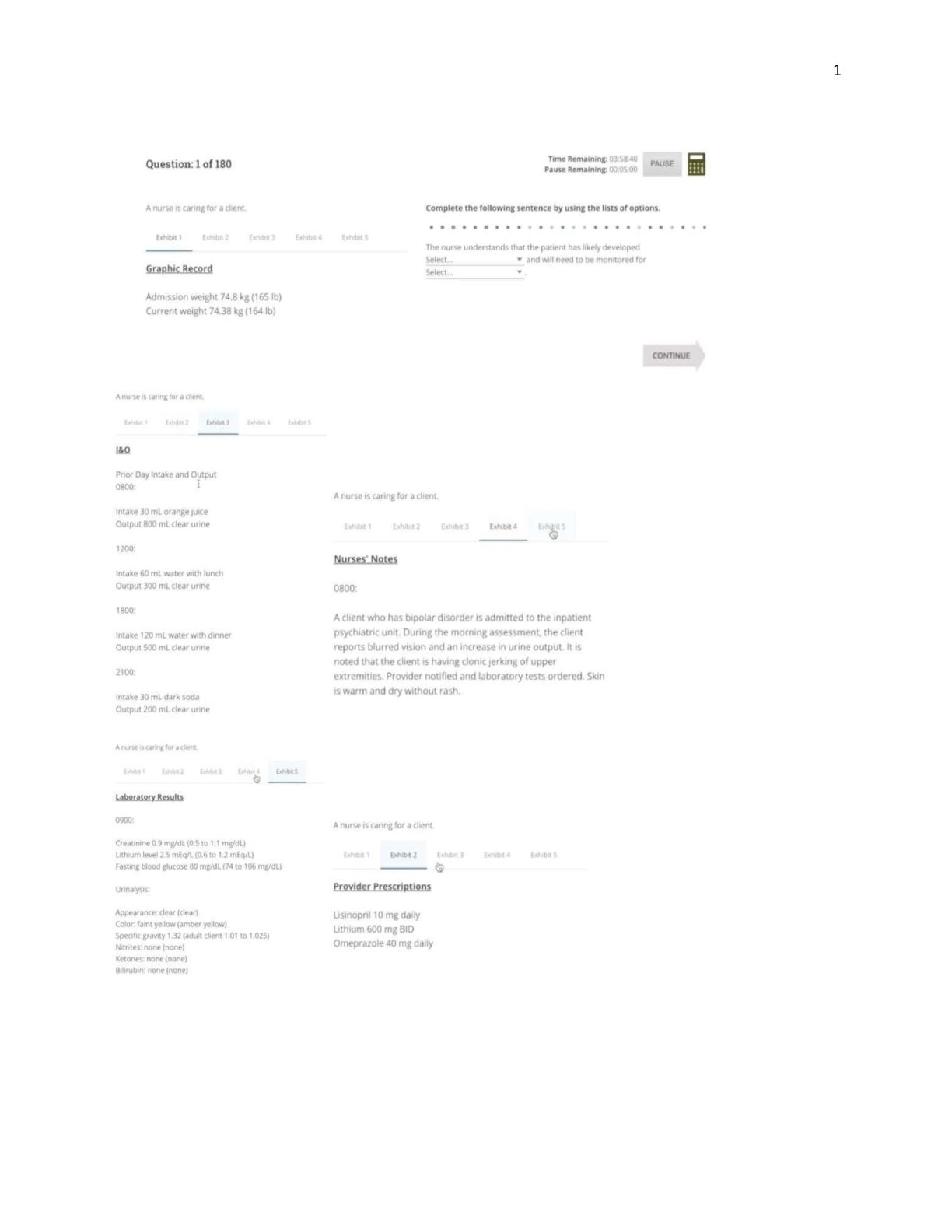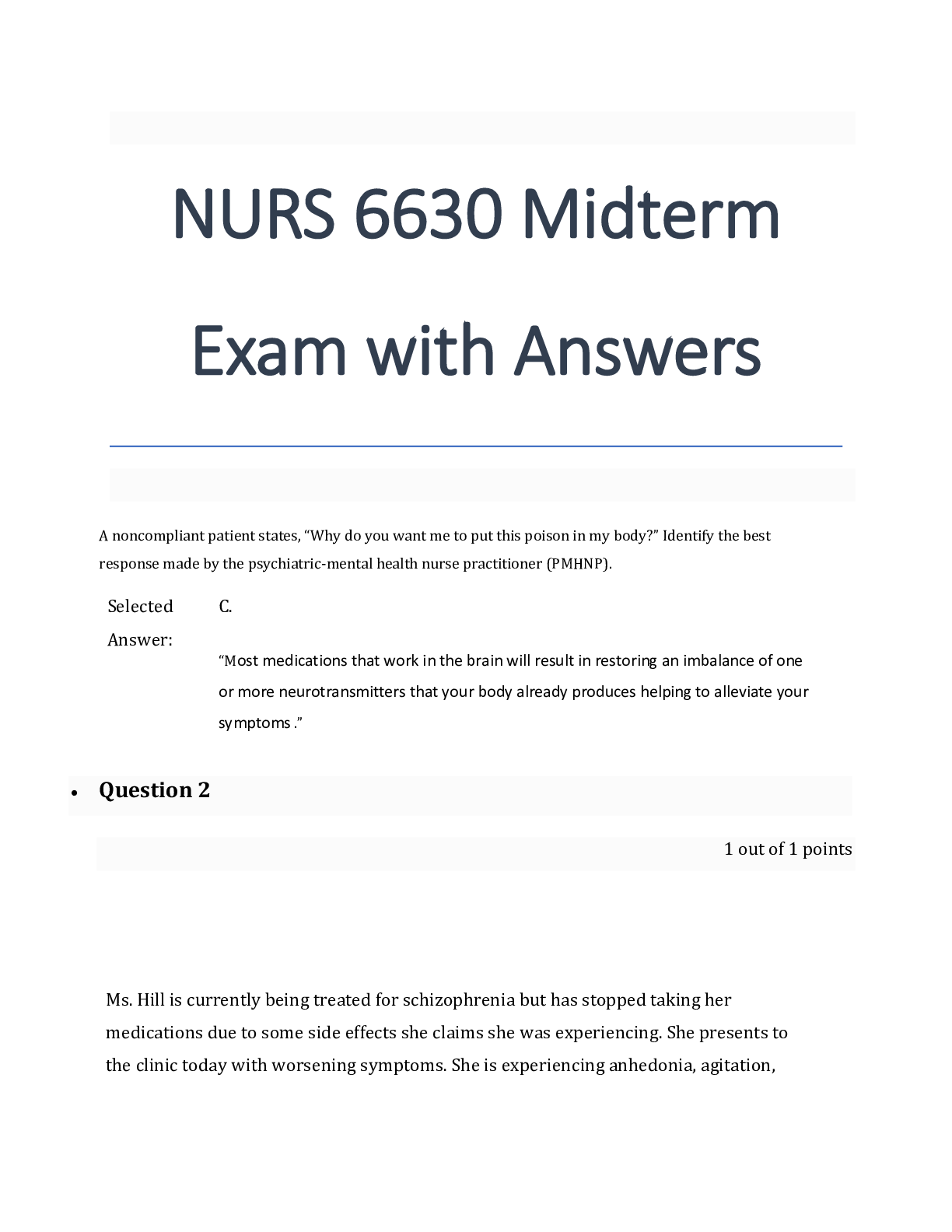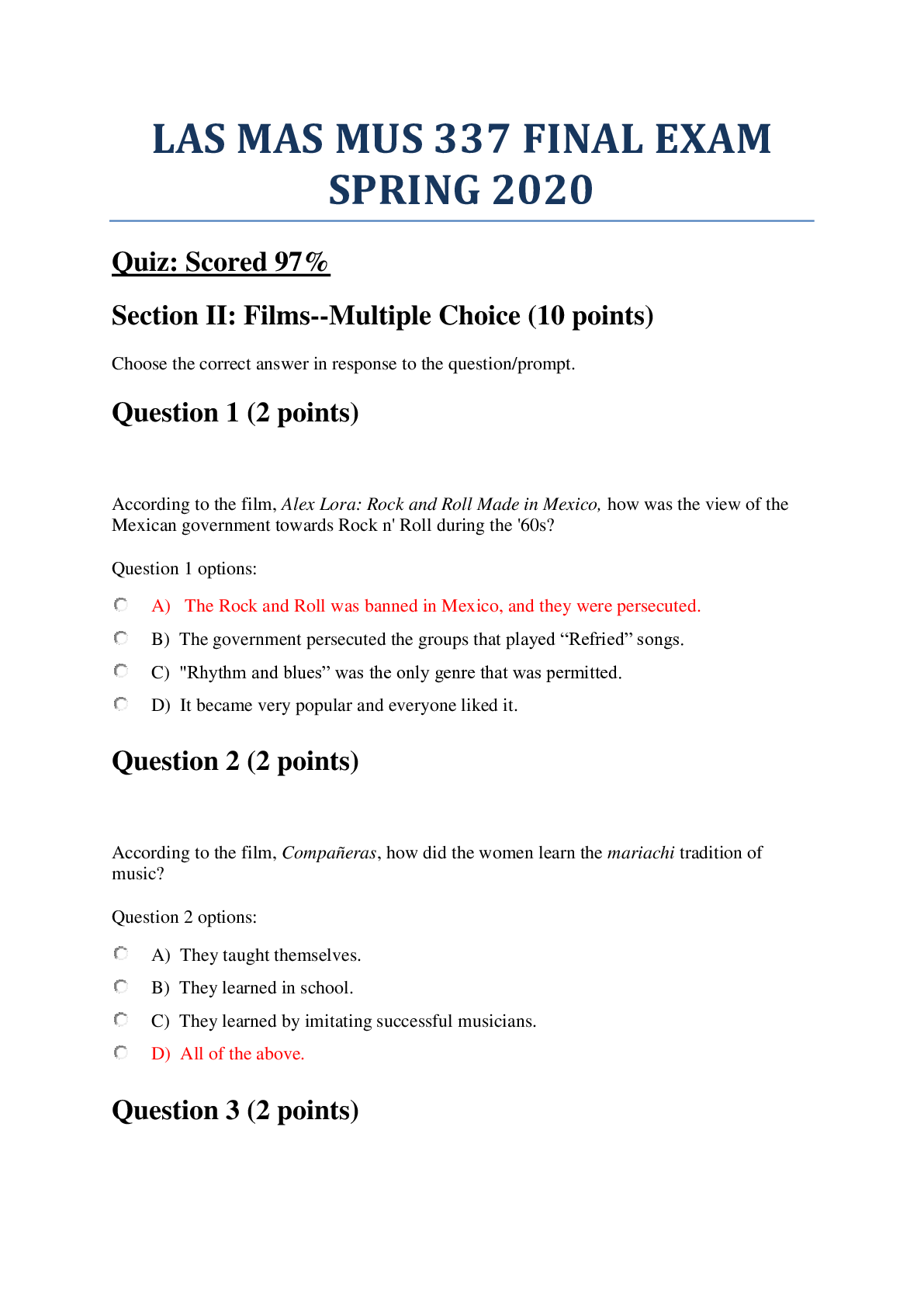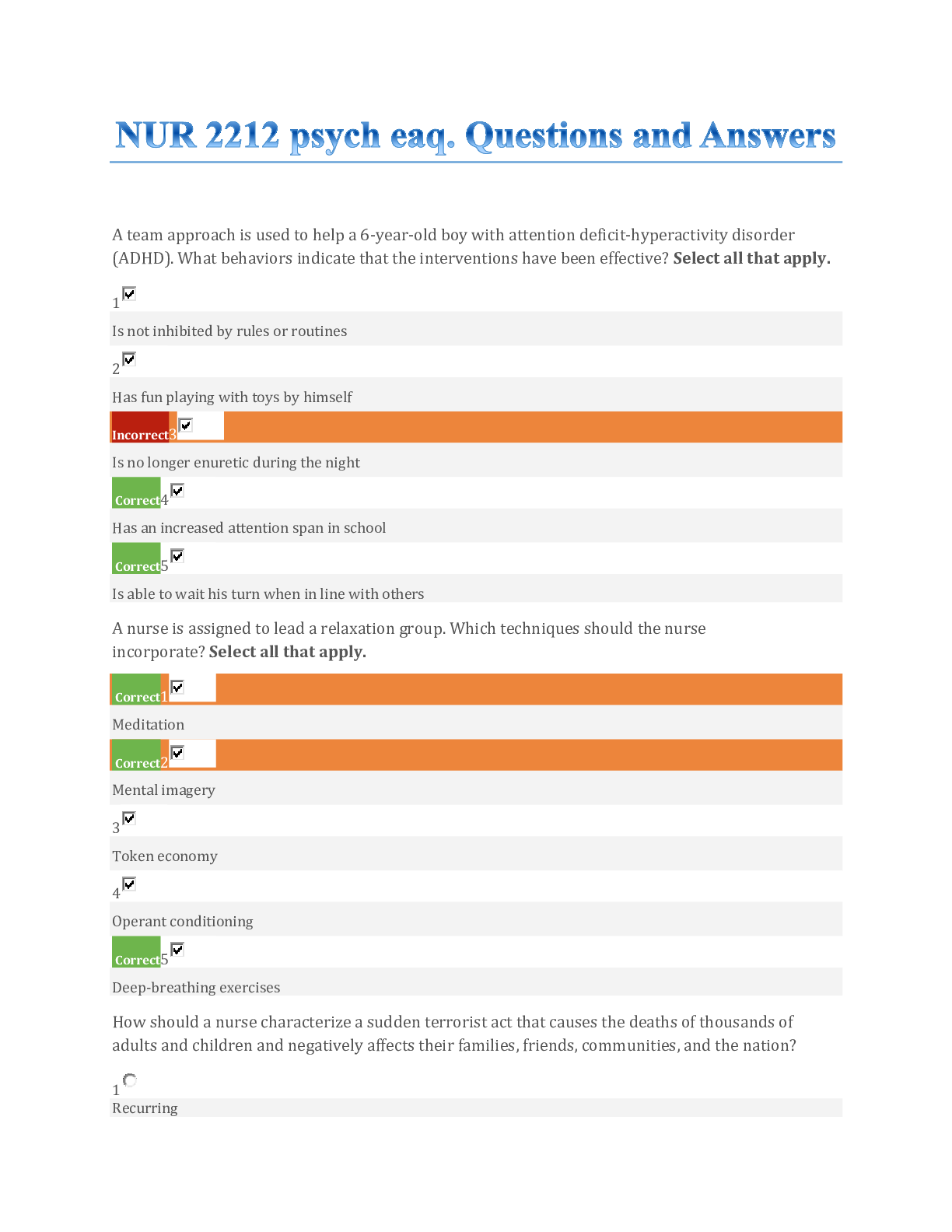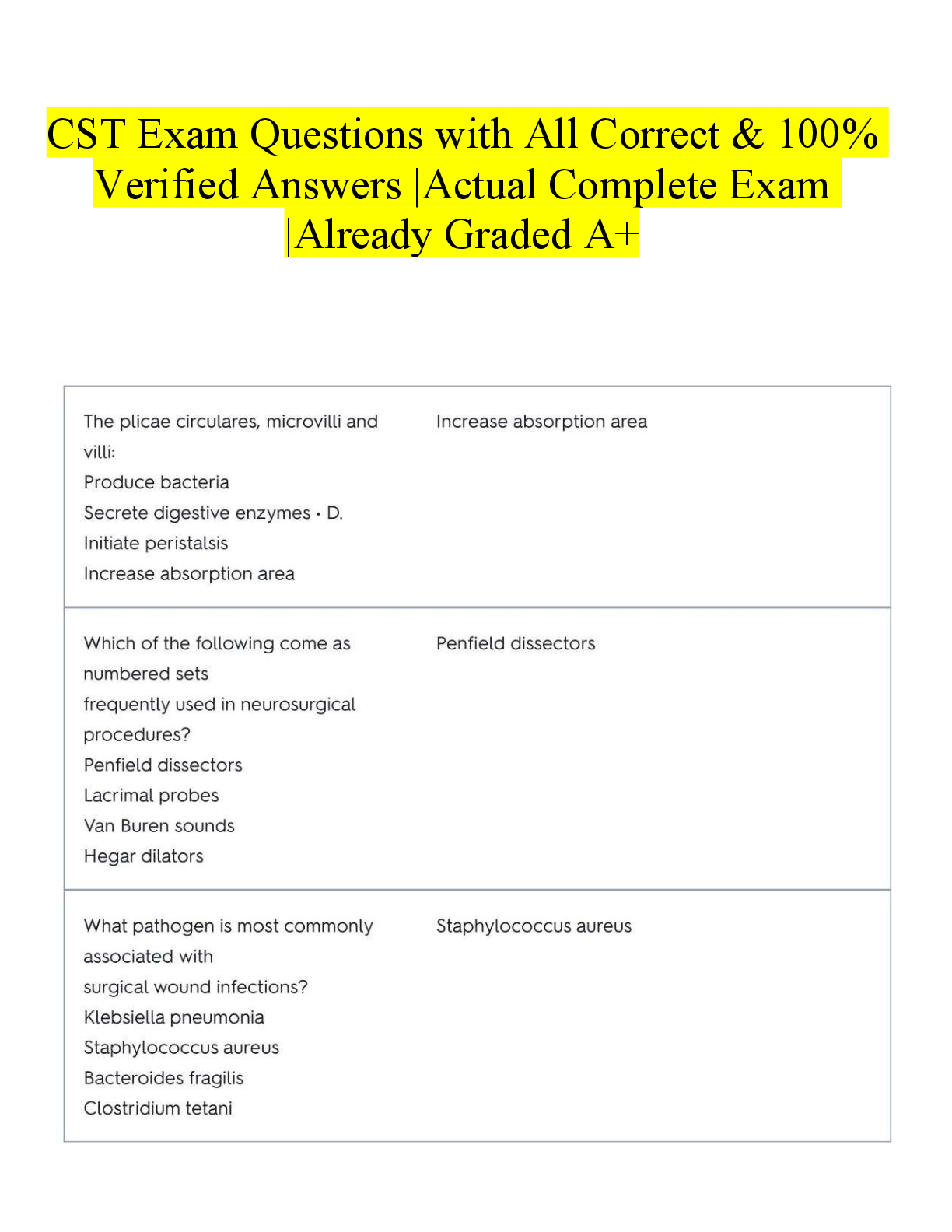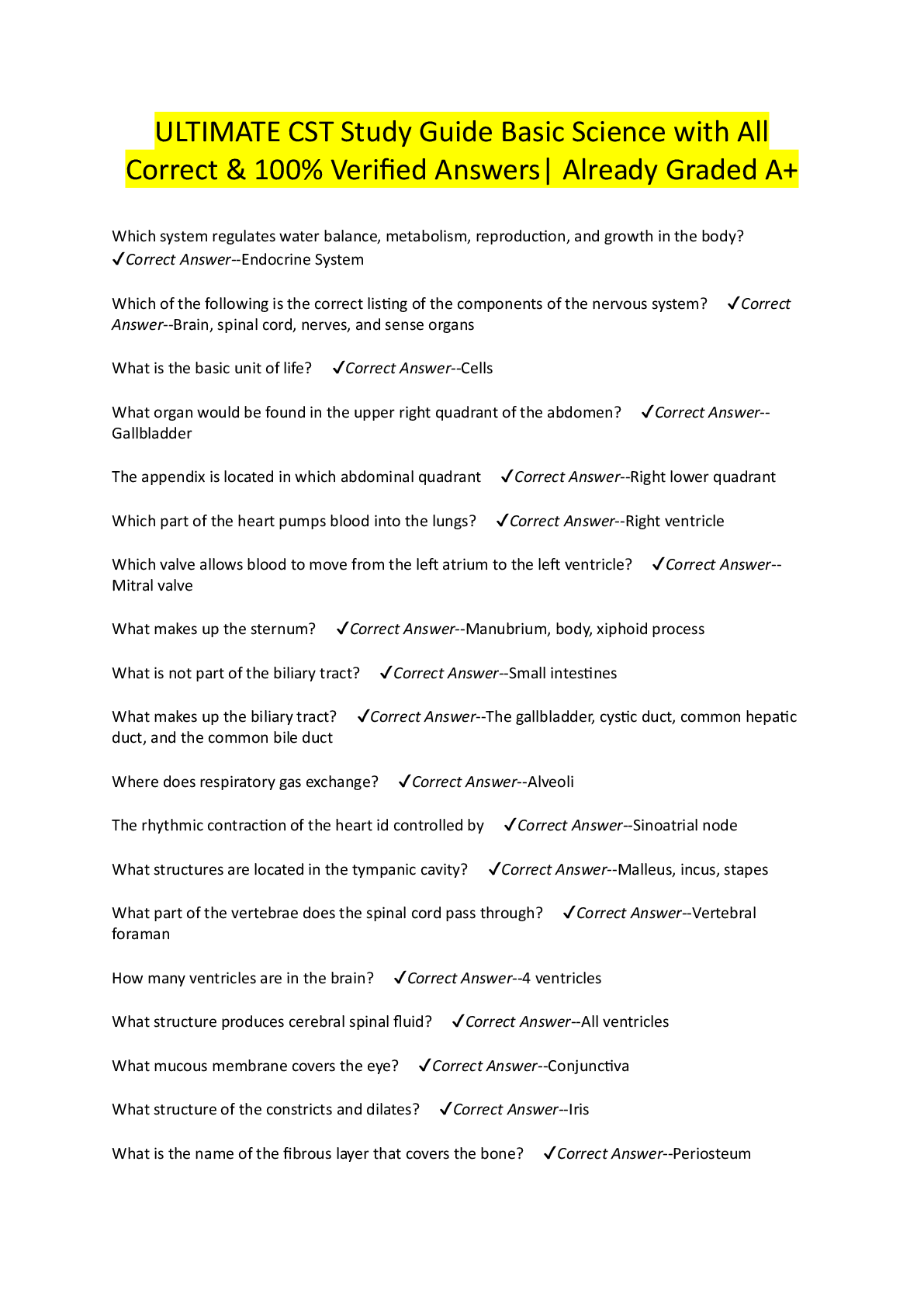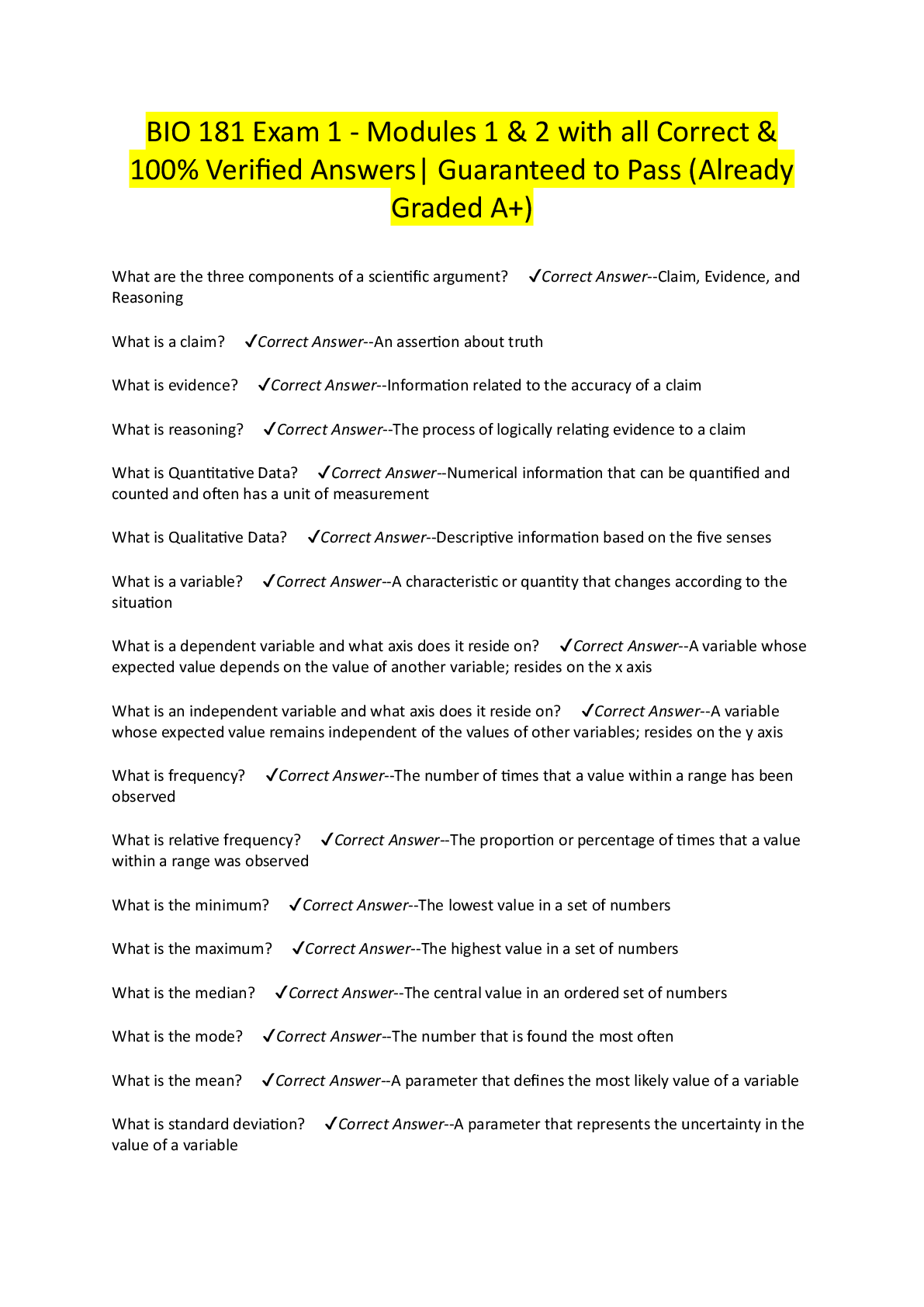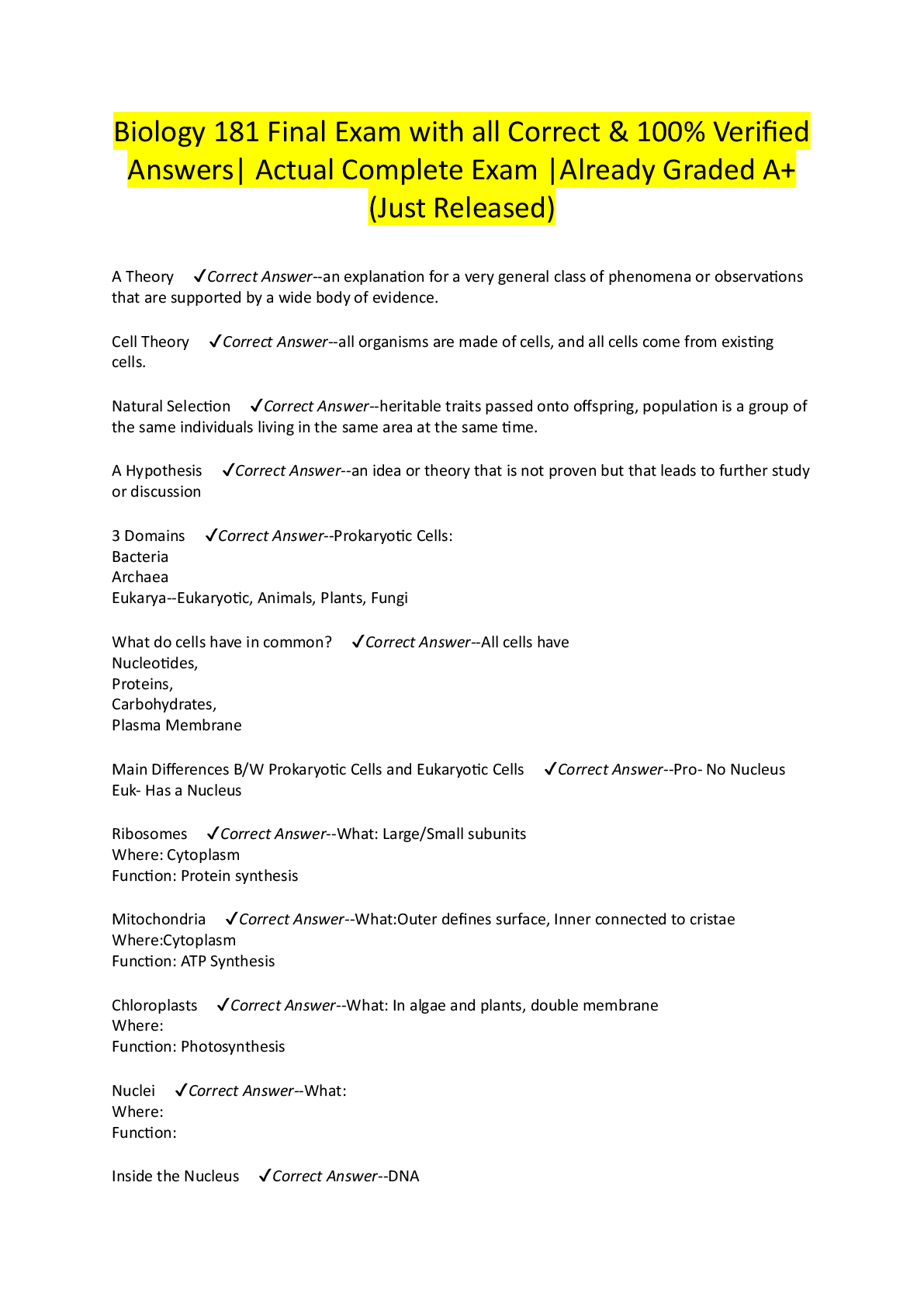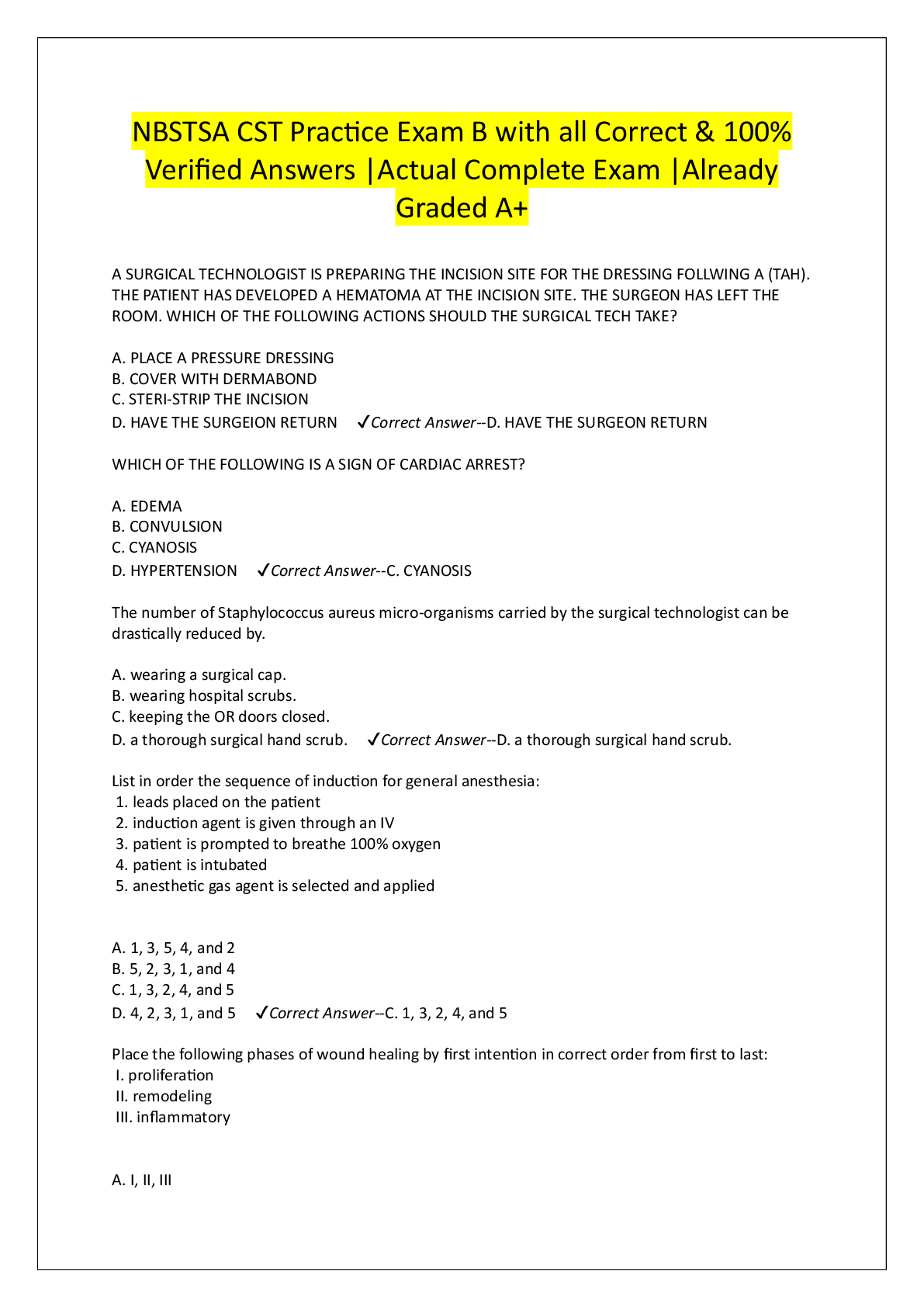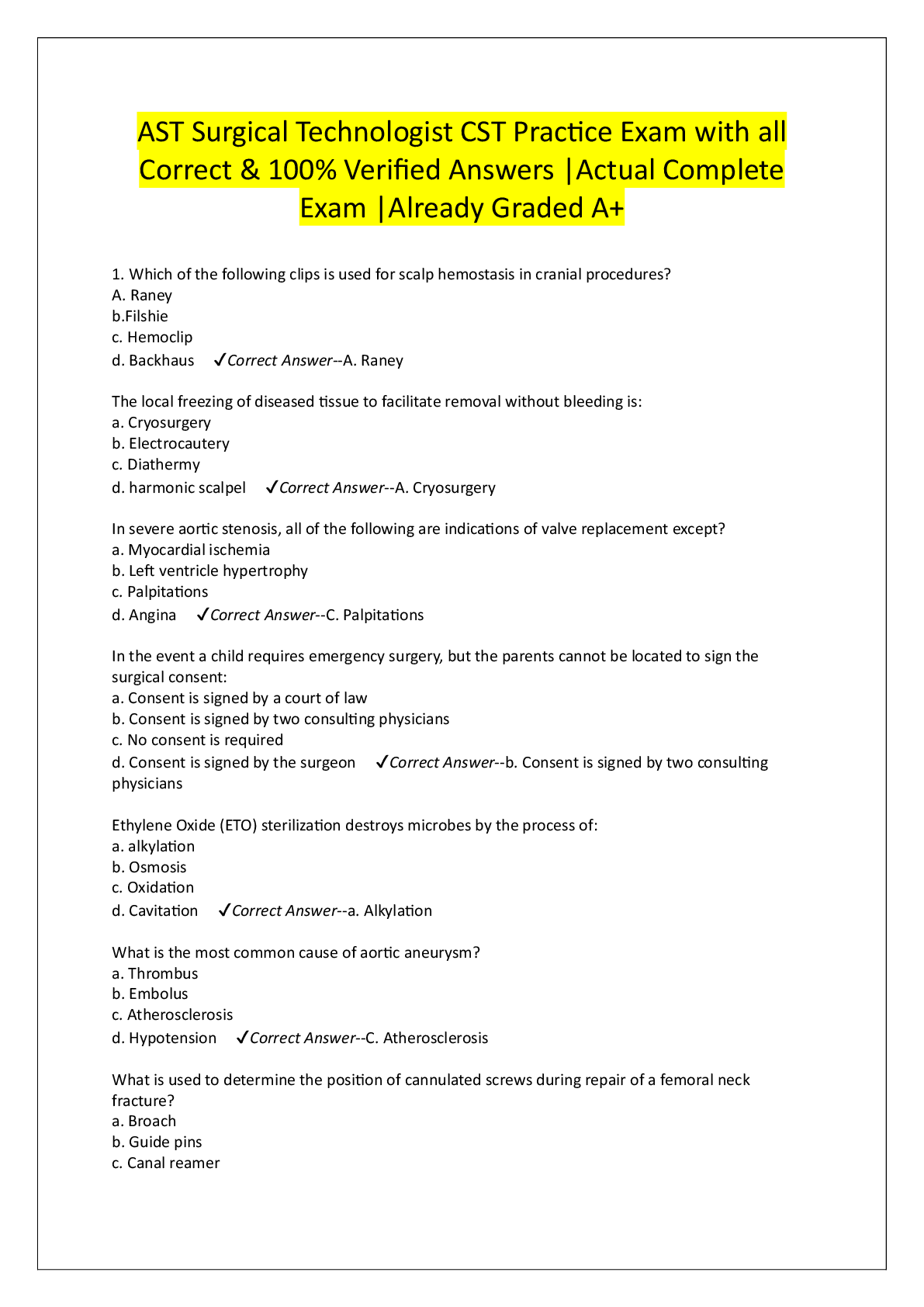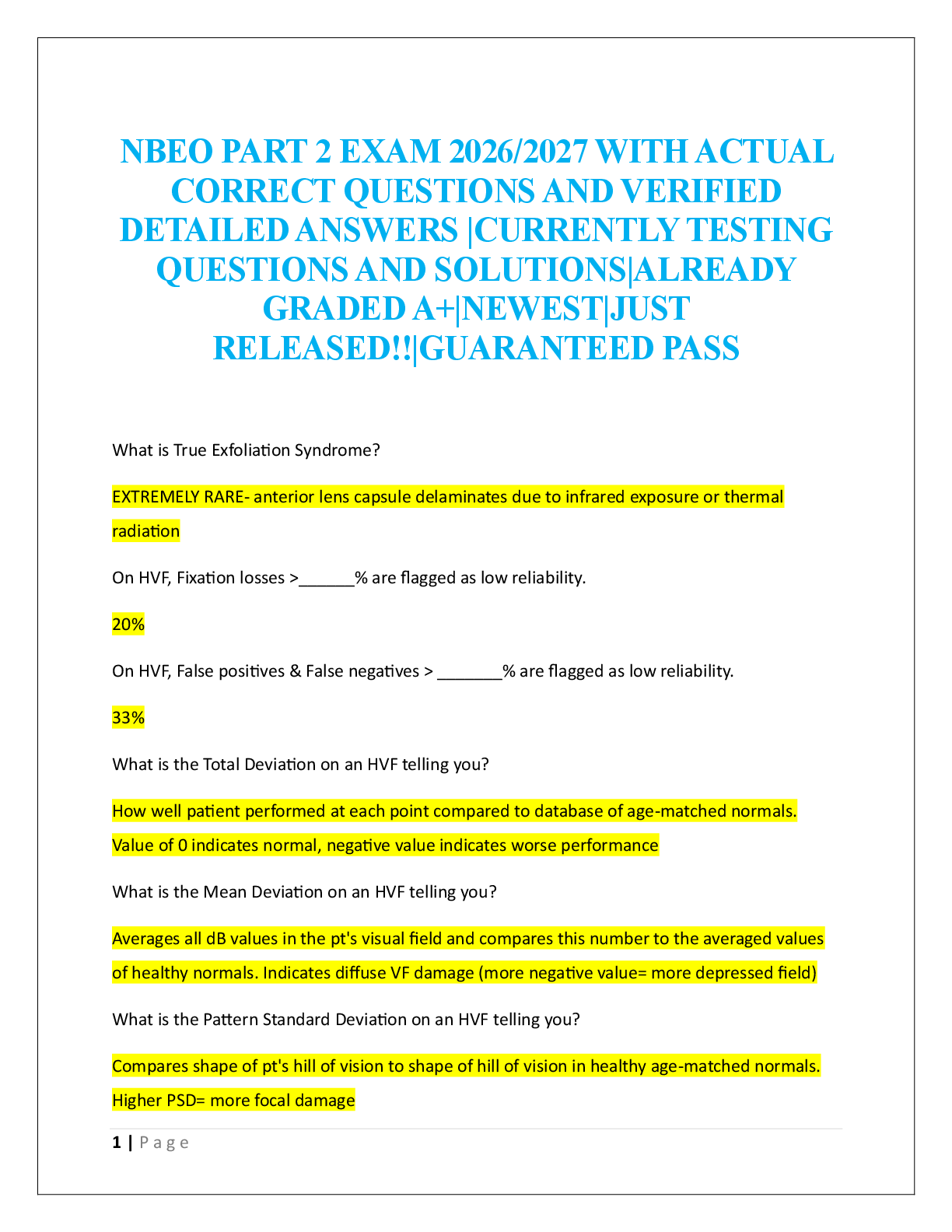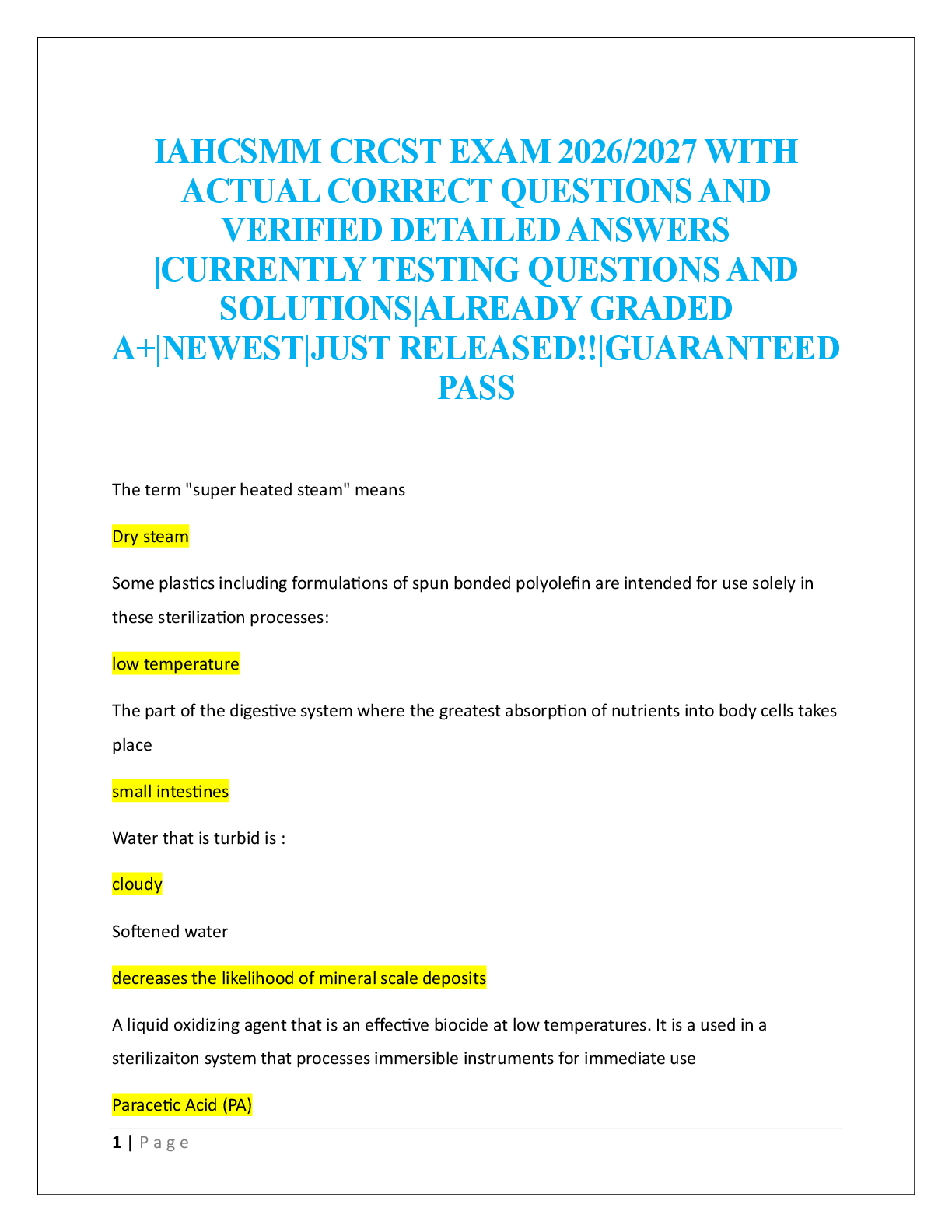Questions and Answers > Arizona State University AST 113 ASTRONOMY Lab 14
Document Content and Description Below
Arizona State University AST 113 ASTRONOMY Lab 14 · Question 1 1 out of 1 points SECTION 1 The following table contains physical data for the eight planets in our Solar System: TERRESTRIAL PL ... ANETS (Earth-like) Mercury Venus Earth Mars Orbit semi-major axis (AU) 0.39 0.72 1.00 1.52 Mass (MEarth) 0.055 0.82 1.00 0.11 Radius (REarth) 0.38 0.95 1.00 0.53 Atmosphere none CO N/O CO By inspecting the values in Table 1, answer thefollowing questions: 1) Terrestrial planets are ______________ than jovian planets. · Question 2 1 out of 1 points 2) Jovian planets are ___________ massive than terrestrial planets. · Question 3 1 out of 1 points Jovian planets are _____________ terrestrial planets. · Question 4 1 out of 1 points Atmospheres of jovian planets are made of: 1 out of 1 points SECTION 2 One of the primary methods used on the search for exoplanets is the Doppler method. A Doppler shift is the perceived change in the frequency of light being emitted by an object due to the relative motion between the object and the observer. If the object is moving towards us, we see a blueshift in the lines of the object's spectrum. Similarly, if the object is moving away from us, we observe a redshift in the object's spectrum. Because a star and its planet orbit a common center of mass, we should observe Doppler shifts in the spectrum of the star due to the planet's influence on the star. The amount that the frequency of light is shifted is proportional to the velocity of the planet in its orbit around the star, as well as the mass of the planet. Astronomers who are looking for exoplanets measure this "wobble" by obtaining Doppler velocity curves. By using this method we can obtain the mass and orbital semi-major axis for extrasolar planets. Figure 1 below shows the Doppler velocity curve for the star HD 209458. If the star did not have a planet in orbit, the velocity would be constant (no redshift or blueshift). Instead we see a sinusoidal variation in the velocity of the star. This sinusoidal variation in velocity is indicative of a planet in orbit around the star. Figure 1 QUESTION: What is the amplitude, V, of the orbital velocity curve in Figure 1 in meters per second? Hint: The amplitude is HALF the difference between the highest and · Question 6 1 out of 1 points The time it takes for the orbital velocity curve to make one complete sinusoidal cycle is the period of the planet's orbit. What is the period of the planet in Figure 1 in days? · Question 7 1 out of 1 points In Figure 1, what is the period, P, of the planet's orbit in years? Select the closest answer below. · Question 8 1 out of 1 points In order to simplify the calculations we will assume that the mass of the star is 1 solar mass (i.e. it has the same mass as our Sun) and that we're viewing the system nearly edge on so that the planet would appear to cross directly between us and its host star. Based on what we know about our own Solar System, what other assumption(s) would be reasonable to make about the exoplanet's system? Select all that apply below. · Question 9 2 out of 2 points We make these assumptions to simplify the equations we have to use for determining the mass of the planet. The equation we use is: P should be expressed in years and V in m/s. The result will be in Jupiter masses. Use the values for P and V from the previous sections and calculate the mass of this new planet in terms of the mass of Jupiter (Use one significant figure). · Question 10 1 out of 1 points Recalling that the mass of Jupiter is 318 times larger than the mass of Earth, what is the mass of the planet in Earth masses? Hint: Use your answer (one significant figure) to the previous question. · Question 11 2 out of 2 points From our assumptions above, we can calculate the distance from this planet to its star, a, using Kepler's 3rd law: What is the distance between the planet and its star in Astronomical Units (AU)? Select the closest answer below. · Question 12 1 out of 1 points If this planet were in the Solar System, where would its orbit be located? · Question 13 1 out of 1 points SECTION 3 On Earth, a solar eclipse occurs when the Moon moves in front of the Sun and blocks the sunlight. The amount of sunlight we see during an eclipse can be plotted versus time, resulting in a light curve. If an exoplanet orbits its star such that it passes between the star and the Earth, we observe what we called a transit, which is a type of eclipse. Astronomers can measure the light curve of an exoplanet transit. From light curve, the radius of the planet can be calculated be measuring the time it takes for the light to go from its initial brightness to the darkest level during the transit. In this section we are going to study the same planet and star we did in Section 2, but this time we will look at the light curve produced by the system during a transit: Figure 2 The light curve in Figure 2 above has been generated with a simulation based on real data. You can find the interactive simulation at http://astro.unl.edu/naap/esp/animations/transitSimulator.html. In the "Presets" box, choose "6. HD 209458" and click on "set". You will now have in front of you the light curve of the star, along with different parameters of the system. QUESTION: Looking at the light curve in Figure 2, we can see that 100% of the star's light is detected initially. When the planet is in front of the star, the amount of light we receive drops. What percentage of the light from the star is received while the planet is fully in front of the star? · Question 14 1 out of 1 points We know that the amount of light blocked by the planet is directly proportional to the size of the planet. Referring to the light curve in Figure 2, what percentage of the star's surface does the planet cover as seen from the Earth? · Question 15 1 out of 1 points Use what you have learned from Figure 2 and assume that both the star and the exoplanet appear as perfect circles on the sky. If the planet covers 1.8% of the star's area as seen from Earth, how many times larger is the radius of the star than the radius of the planet? Hint: Recall the equation for the area of a circle. · Question 16 1 out of 1 points Assume that the radius of the star is 700,000 km and that the radius of Jupiter is 70,000 km. How many times larger is the radius of the exoplanet compared to the radius of Jupiter? SECTION 4 Based on its distance from its parent star (calculated in Section 2) and following the planet classification studied in Section 1, this planet would be considered... · Question 18 1 out of 1 points Based on the mass that you calculated for the planet in Section 2, you would call this planet... Based on the radius that you calculated for the planet in Section 3, this planet would be... · Question 20 1 out of 1 points Spectroscopic observations of this planet have noted that it is surrounded by a layer of hydrogen. Based on this observation and comparing it to the planets in our Solar System, this planet would be... [Show More]
Last updated: 3 years ago
Preview 1 out of 14 pages

Buy this document to get the full access instantly
Instant Download Access after purchase
Buy NowInstant download
We Accept:

Also available in bundle (1)
Click Below to Access Bundle(s)
.png)
Arizona State University AST 113 ASTRONOMY Lab 1- Lab 14 All Scenarios <Questions and Answers>
Questions and Answers > Arizona State University AST 113 Lab 1. All Scenarios Questions and Answers > Arizona State University AST 113 ASTRONOMY Lab 2 Questions and Answers > Arizona State Unive...
By Kirsch 3 years ago
$49
14
Reviews( 0 )
$9.00
Can't find what you want? Try our AI powered Search
Document information
Connected school, study & course
About the document
Uploaded On
Aug 08, 2022
Number of pages
14
Written in
All
Additional information
This document has been written for:
Uploaded
Aug 08, 2022
Downloads
0
Views
333

